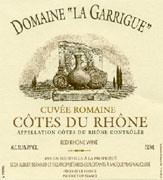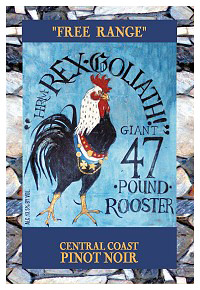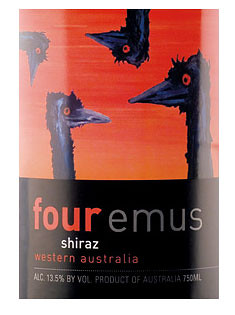O' vile temptress; O' ruby-colored siren of the vine, how your delectable, succulent promise does call to me from the gla--GAH! What is that smell? This is the scene that played out in my kitchen the other day, and while I tried my best to ignore it, I knew that my Rex Goliath Pinot Noir had fallen prey to 2,4,6-trichloroanisole, the dreaded cork taint.
If you've never encountered it, consider yourself lucky. A corked wine has a musty, woody smell that I liken most to dry-rot on a log. I've read descriptions ranging from wet cardboard to damp basement, but those all fall short. To anyone who has tromped through Florida woods and happened upon a felled log slowly crumbling to wood dust, you know the smell. Organic, musty, and slightly acrid, it completely destroys the wine's natural aromas and eliminates fruit from the palate. Even a slight taint can be disastrous, as this was. The wine was undrinkable.
Corked wine has decreased tremendously over the years; according to industry sources the number of corked bottles is down from one in 12 to as little as one to two percent. From personal experience, I would say that's fairly accurate as this was only the second bottle I've had that could be said to have been tainted. The other was a bottle Spanish wine that had a particularly dry cork that crumbled when I pulled it from the bottle--a huge disappointment.
 So what to do? I once heard that tainted wine can sometimes be resurrected if given enough time to breathe. Whoever told me that is a damn dirty liar. Left alone in the glass, the wine didn't change; it didn't mellow or bloom. It remained a musty, dank mockery of my planned Saturday evening. Undaunted, I reached for a new bottle, a Domaine La Garrigue 2004 Cotes du Rhone Cuvee Romaine.
So what to do? I once heard that tainted wine can sometimes be resurrected if given enough time to breathe. Whoever told me that is a damn dirty liar. Left alone in the glass, the wine didn't change; it didn't mellow or bloom. It remained a musty, dank mockery of my planned Saturday evening. Undaunted, I reached for a new bottle, a Domaine La Garrigue 2004 Cotes du Rhone Cuvee Romaine.
O, temptress. O succulent, ruby-colored siren... Well, you get the picture. Simply put, this wine is brilliant.
The Domaine La Garrigue 2004 Cotes du Rhone Cuvee Romaine, a blend of 60% Grenache and 40% syrah, is deep, dark-ruby in color with hints of purple lightening slightly towards the edges. It had a powerful nose, blending dark fruits such as black plum and a hint of blueberry with licorice and spice. The palate was fruit-forward with hints of cranberry in the tannins and a medium-bodied and supple mouth feel. The finish was fine, long and clean.
This wine would pair marvelously with a number of dishes, being supple enough for seared salmon, yet sturdy enough to stand up to hard cheeses or beef. I paired it with an altered pasta puttanesca (sans anchovies) and it did marvelously, enhancing the flavors and coupling well with the salty, savory dish. An absolutely stunning value, I recommend this wine without hesitation.
 Enter the Albertson's liquor annex, placed next to each Albertson's grocery store, and ever a den of iniquity if there was one. However, they often have a surprising selection of wine, and it's one of the only places in town where I'm assured one of my favorite values, the HRM Rex Goliath Pinot Noir, non-vintage.
Enter the Albertson's liquor annex, placed next to each Albertson's grocery store, and ever a den of iniquity if there was one. However, they often have a surprising selection of wine, and it's one of the only places in town where I'm assured one of my favorite values, the HRM Rex Goliath Pinot Noir, non-vintage. In the back of the same issue of Wine Spectator that made me realize Fine Living's Pairings might be playing out of my league, I'd spotted a review of Four Emus' Cabernet/Merlot mix. I wasn't lucky enough to find the same varietal, but I did pick up the
In the back of the same issue of Wine Spectator that made me realize Fine Living's Pairings might be playing out of my league, I'd spotted a review of Four Emus' Cabernet/Merlot mix. I wasn't lucky enough to find the same varietal, but I did pick up the 

